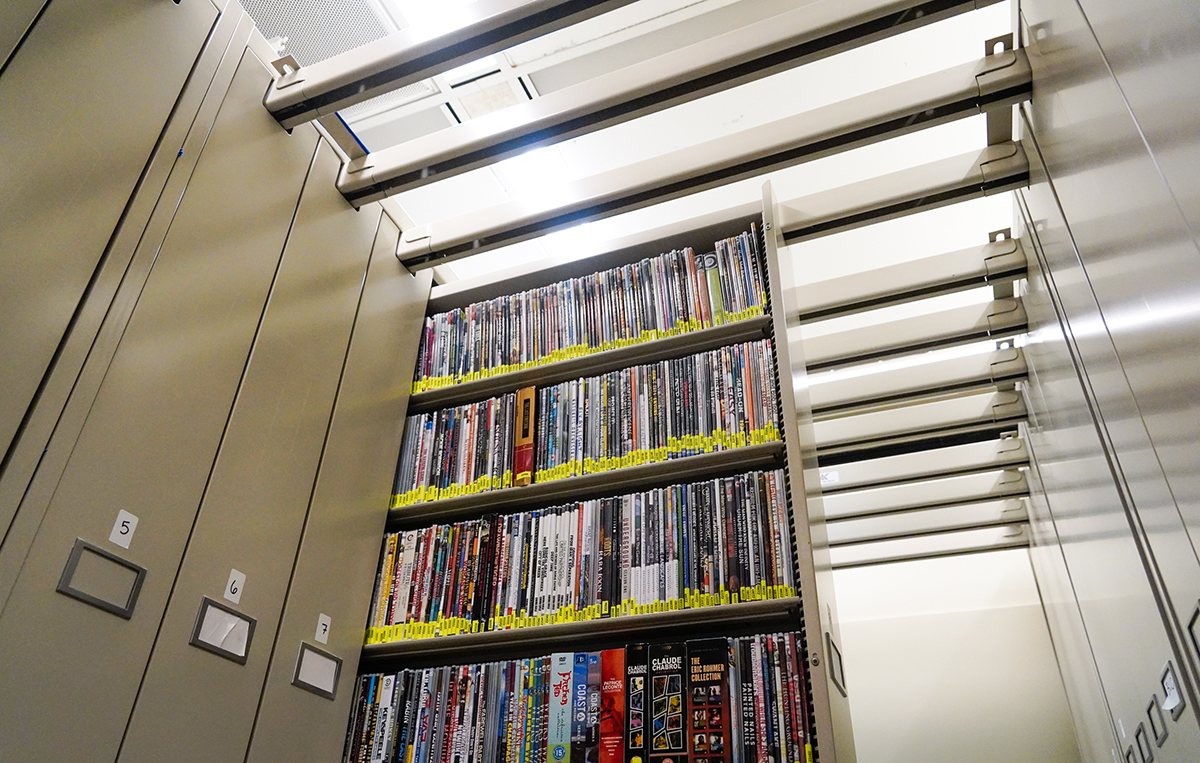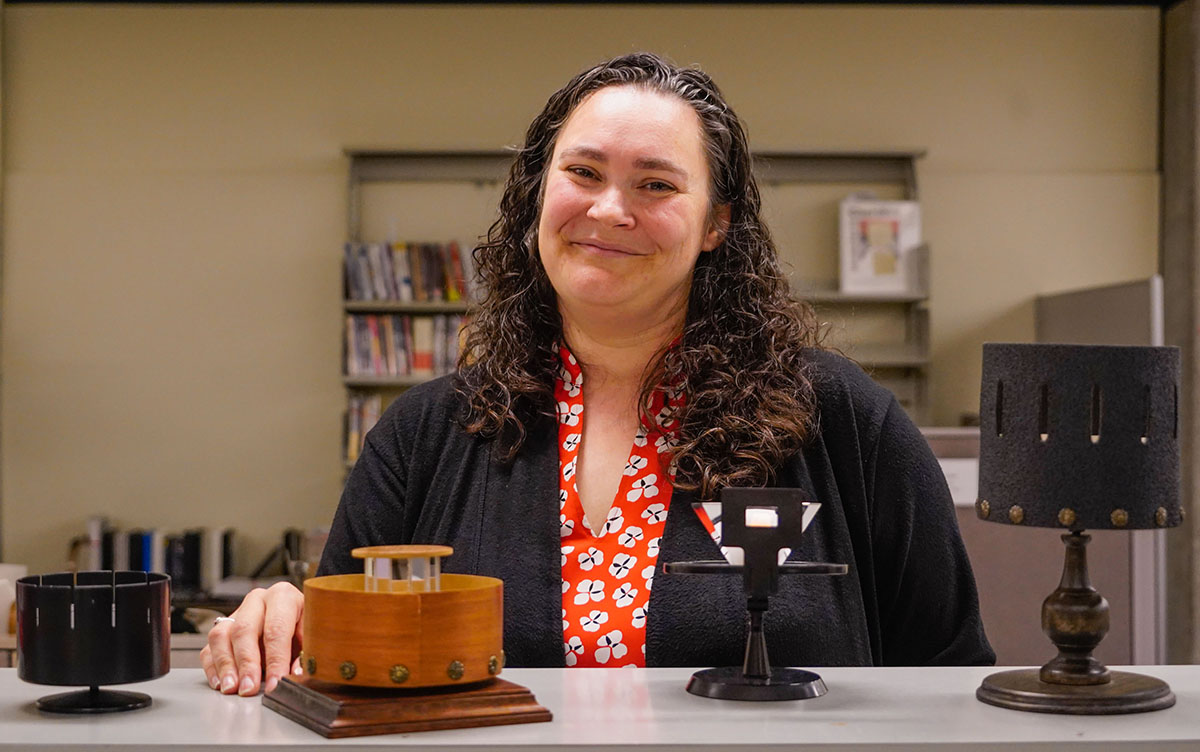
It’s 2 in the morning, but Gisèle Tanasse is wide awake.
From the depths of her brain, a scene from 1983’s A Christmas Story comes flashing forward: Blond and bespectacled, little Ralphie Parker is fading from the screen, swallowed by a black hole zeroing in on his face.
“Iris fade,” Tanasse declares to herself before falling asleep.
Tanasse is UC Berkeley’s film and media services librarian and a 12-year veteran of the Media Resources Center, or MRC — an unassuming cove in Moffitt Library stocked floor-to-ceiling with DVDs and electronic gizmos. Her subconscious now plays an endless reel of film, serving up movie clips and trivia whenever duty calls.
“My husband hates seeing movies with me,” Tanasse says, “because I see them in a very different way.
“When I watch a movie, I'm working.”
Her late night musings are part of a yearslong project called Lumière — a supercharged instructional media platform created by the MRC and the Berkeley Language Center, or BLC. The platform, which launches this fall, sorts film and documentary clips by language, theme, cinematic techniques, and more, offering instructors a streamlined tour of the 10,000-clip catalog.
“Whenever I see a new film, I have departments and individual instructors running through my head,” Tanasse says. “I’m thinking of how a particular person might use a film.”
“It’s scary, because (there’s) a lot in this brain,” she says, smiling.
Lumière — the French word for light and a nod to pioneering filmmakers the Lumière brothers — comes as version 2.0 of a popular database called the Library of Foreign Language Film Clips, created in 2007 by the BLC.
At first, the platform held only foreign films. Film is uniquely suited for language instruction, explains Mark Kaiser, BLC's associate director, as a portal into another world.
“The film has been made in that country for native speakers and as a result it is filled with values and attitudes and so forth that reflect that culture,” Kaiser says. “As opposed to our textbooks, which tend to be written for an American audience by people living here.”
Each clip comes with a list of vocabulary words and an audio file that can be slowed down. Those vocabulary words — along with the keywords and rhetorical devices, such as idioms, featured in a clip — are tagged and thrown into the hopper. Instructors can then search the system for everything from Russian small talk to metaphors in Tagalog.
In 2015, the BLC and the Library joined forces to expand the catalog, adding English language films of all genres and helping instructors across campus cut clips. Today, the database serves about 80 universities around the country.

To meet that growth, Kaiser and Tanasse dreamt up a sequel: Lumière. One exciting feature in Lumière is a glossary of film terms — angles, zooms, transitions, and the like — accompanied by classic film examples. Clips come with a list of the techniques deployed in the shot, as well as translations of those terms in the language of the film.
The goal, Tanasse says, is to make film an accessible medium for students of all fields, giving them the fluency to engage new forms of documentation in the classroom.
Today, that work is essential, says Victoria Robinson, a lecturer in the Ethnic Studies Department. Especially in an age of fake news and harmful myths, she says, teachers need more innovative tools to inform and inspire students.
“The pressures on the classroom to do an emotional as well as an intellectual job have been growing, mostly because of the political climate that we live inside,” Robinson says.
Beyond storage, Lumière also provides space for interaction and reflection. Students will be able to add comments to clips at specific timestamps, which their peers can respond to. If a class is watching Get Out, for instance, “an instructor could ask students to identify instances of white liberal racism” and students could have thoughtful debates about those choices, Kaiser says.
“We’ve moved beyond this ‘sage on the stage’ and ‘let me just tell you how brilliant I am’ model of learning,” Robinson says. “What happens in those media environments is we honor student engagement — it becomes a real active learning space.”
Robinson leads the campus’s American Cultures Center. All undergraduates at Berkeley are required to take an American Cultures course on campus, examining the complex racial, cultural, and ethnic makeup of the United States.
To understand those issues, Robinson says, students need to feel close to them. That’s where film comes in.
“In questions of identity, especially circulating around race, intimacy is required — and it is hard to get intimacy through a dataset or through a big historical text,” says Robinson, who partnered with Tanasse at the MRC to help American Cultures faculty expand the repository. “Intimacy creates proximity, and proximity is what shifts people’s emotions and ideas of action.”
Robinson’s own research and teaching focuses on social justice issues, including mass incarceration, prison reform, and immigration. One of her favorite clips to show in class comes from the 2011 documentary The Black Power Mixtape (1967-1975). The clip shows male prisoners at the Attica Correctional Facility, in upstate New York, discussing their demands for basic rights such as food and religious freedom during the 1971 Attica prison uprising.
“To hear those men in a three-minute clip start to unravel for you a whole preset notion of what prison is and who is inside it, in 1971, is so powerful,” Robinson says. “Students say, ‘Why didn’t I know about this? I am so angry — so angry.’”
“I want you to feel like it’s something that you have a stake in,” she says. “You have skin in this game.”
A previous version of this article misstated Mark Kaiser's title. In fact, he is BLC's associate director.